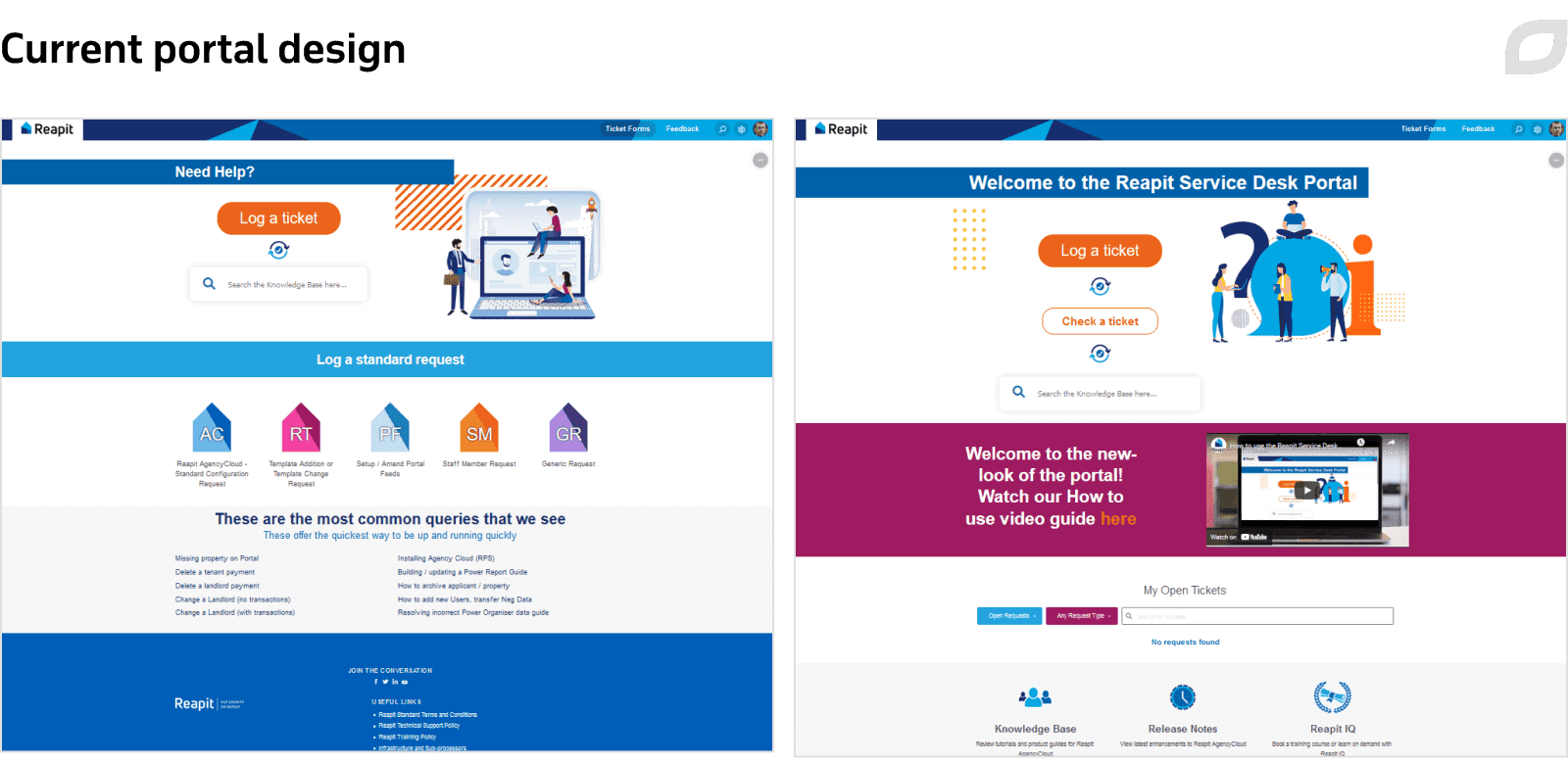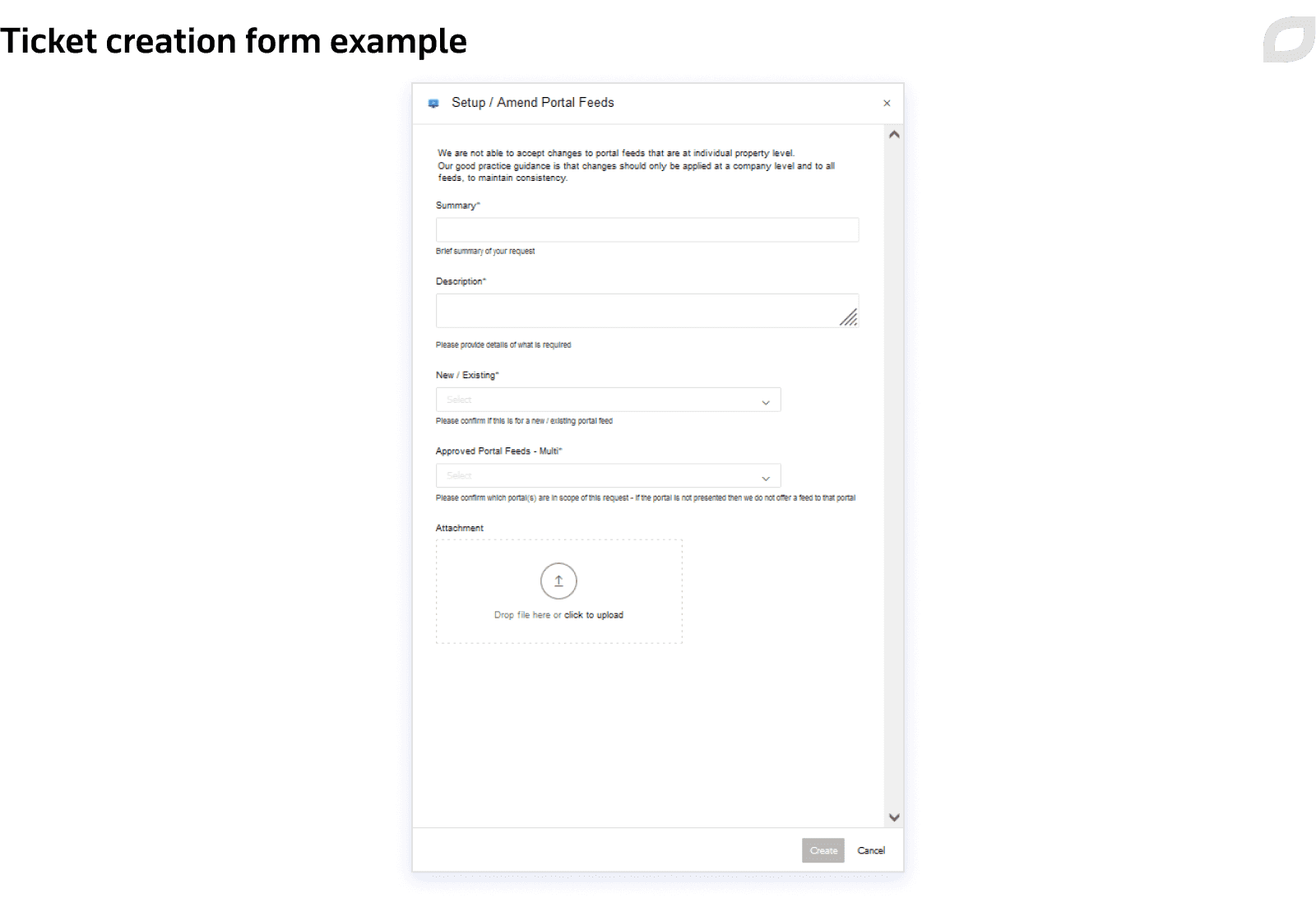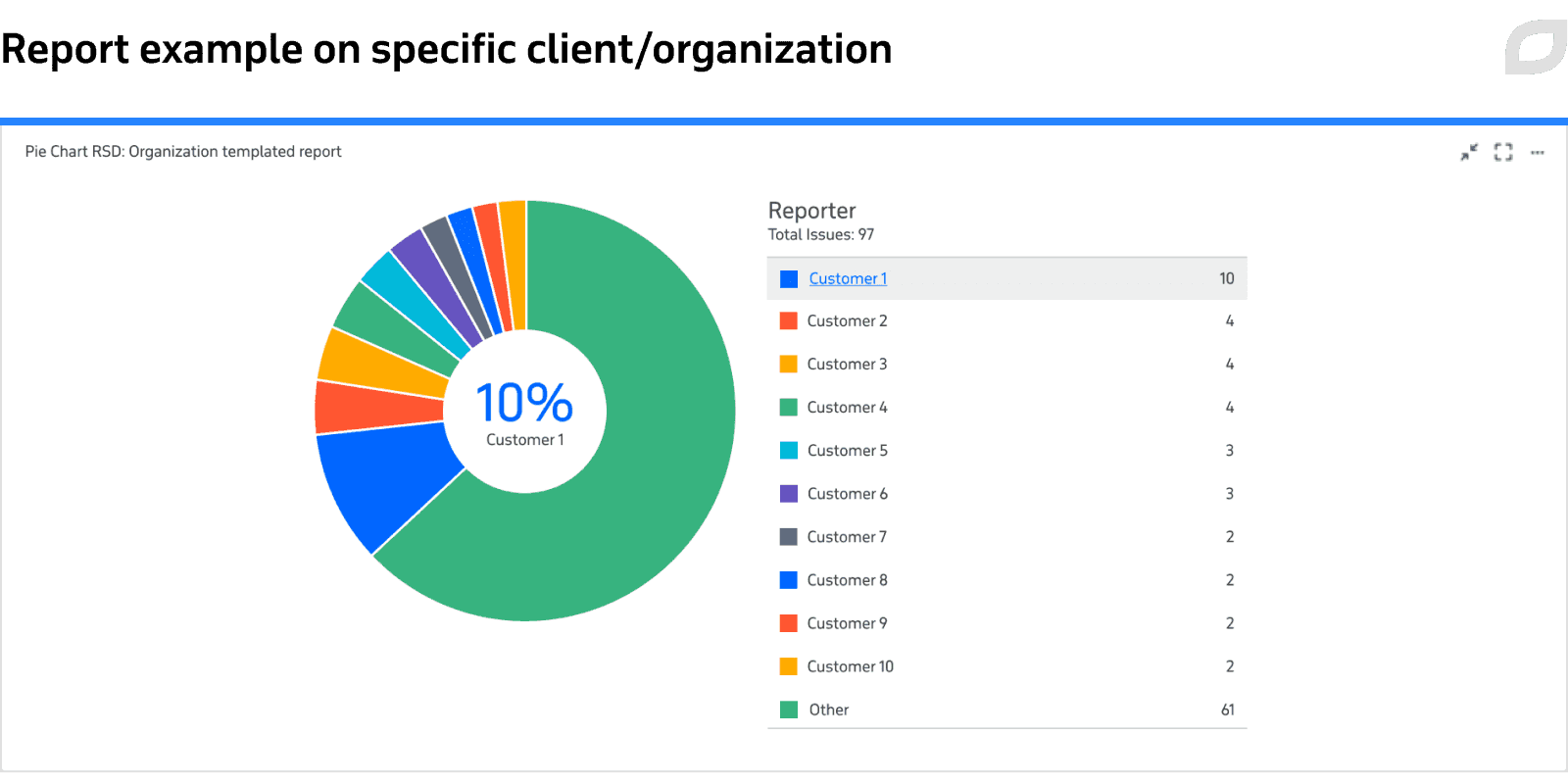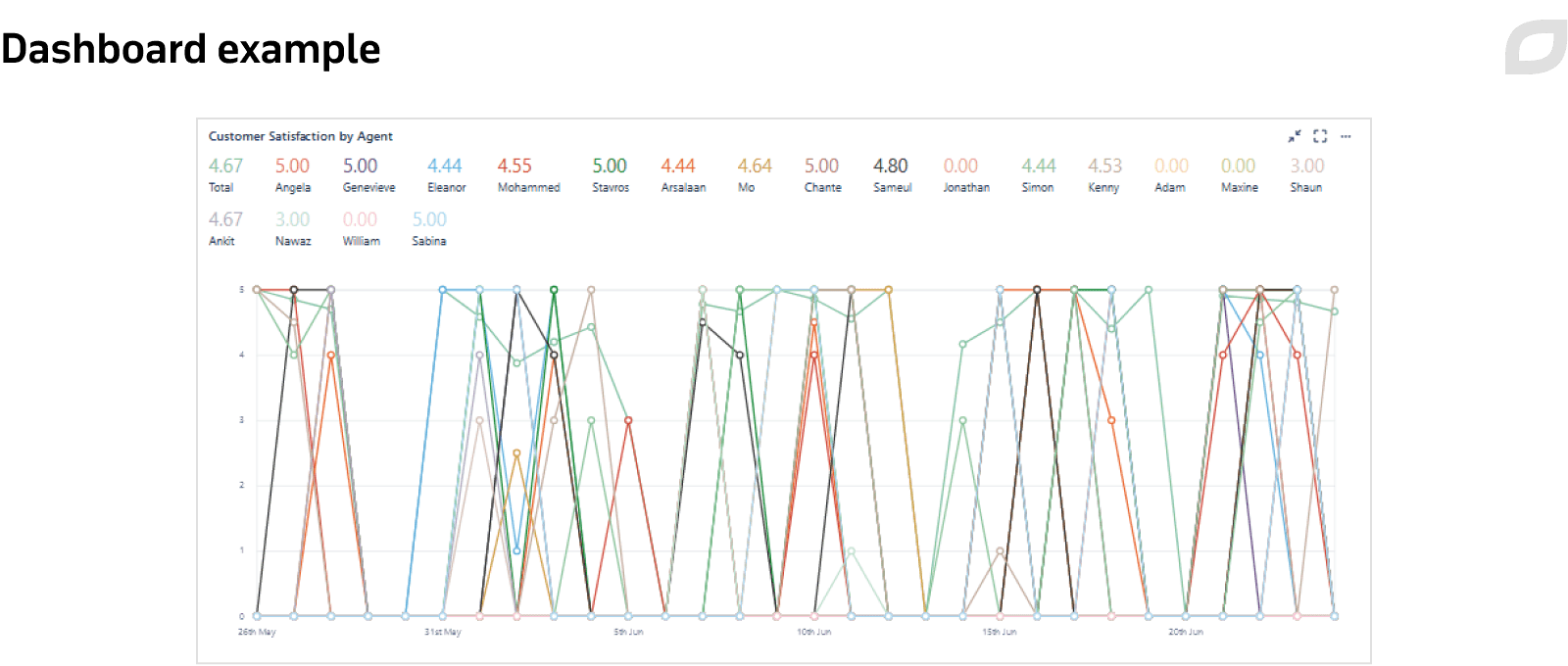
User experience consulting for a real estate provider
Itransition analyzed the customer’s support solution and helped them optimize its user experience and ITSM processes.
Challenge
Reapit is an Estate Agency Business Platform provider serving residential estate agencies, providing software solutions to 65,000 users across 5,200+ offices and supporting over 225,000 tenancies across the UK and Australia.
The customer has distributed support teams that work in different time zones and use Atlassian Jira Service Management (JSM) Cloud to handle user queries. Processing 200+ tickets daily, they needed to ensure timely ticket resolution and satisfactory end-user experience. At some point, the customer realized that employees faced several process issues that interfered with their work, for example, their client portal was too complicated for end users and the development and support teams weren’t synchronized. Therefore, the customer wanted to improve their client portal and optimize agent and user experience to provide faster and more professional service to their clients.
The customer was searching for a reliable vendor that would analyze their existing ITSM processes and deliver recommendations for their optimization and improvement, as well as deliver enhancements to their client portal. The customer chose our team due to our extensive portfolio of successfully implemented projects, the Atlassian Gold Solution Partner status, and certified Atlassian specialists on board.
Solution
Consulting
Together with the customer, we divided the project into two large stages: solution audit and enhancements implementation. The customer provided our experts with access to their Atlassian instance for analysis. We also had three interview sessions with the JSM administrators and support specialists that interact with end users. It helped us get a clearer picture of the customer’s existing processes and identify areas of improvement. We found out that the customer’s JSM instance was configured intuitively by the customer’s administrators, and with time, it became too complex due to multiple duplicate statuses and siloed workflows. As a result, it prevented the customer's support agents from delivering enhanced client service.
We prepared a separate document with audit results, which included inefficiencies we detected and recommendations on how to improve them. Our Atlassian experts offered improvement recommendations in the four key areas, such as client/agent experience, processes and tools, JSM configuration, and reporting.
Client/agent experience
|
Found issues |
Recommendations |
|---|---|
|
Clients had access to two different portals with different look-and-feel, which created confusion. |
Avoid using the default JSM client portal. |
|
Some users reported that the client portal was hard to navigate. Newly joined users also had trouble finding the form to create a request. |
Consider additional customization of the client portal layout, UX, and other aspects. Review and analyze user forms. |
|
There were a lot of queues, which was confusing for agents. |
Arrange agent queues in logical groups and consider restricting the visibility of queues. This would allow the support team to work on the relevant requests at the right time. |
Processes and tools
|
Found issues |
Recommendations |
|---|---|
|
No standardization for Jira, Confluence, and JSM usage. |
Create and maintain internal documentation for processes and team responsibilities in Confluence. Make sure to document overall processes and workflows, team responsibilities and common practices, event management, configuration management, role-based key instructions, and how-to pages describing common JSM use cases. |
|
Third-party apps (OKR Board, Jira Misc Workflow Extensions, Easy Agile Roadmaps) replicate the functionality which exists out of the box, adding to the expenses. |
Use JSM to its fullest potential. Here are the JSM features worth trying:
Potential cost savings from JMS features use are 20%. |
JSM configuration
|
Found issues |
Recommendations |
|---|---|
|
Some issue types were recurring and could be merged, as they had the same workflow. There were also hidden issue types, which were not used for some internal reason. |
Clean up and merge unused and duplicated objects. Remove unused statuses, unify statuses with the same meaning, create clear names for statuses and transitions, and standardize the workflows. |
|
There were redundant automated processes with irregular maintenance and troubleshooting routine for them. |
Review all automated processes and merge, fix, and simplify them. Establish a regular maintenance and troubleshooting procedure. Define a shared service account to link automation to it and get updates on automation errors. |
|
There were a lot of custom events in the notification scheme, which unnecessarily complicated notification configuration and maintenance. Some end users complained they didn’t receive email notifications about JIRA updates, while some agents reported receiving spam notifications. |
Revise all notification events and clean them. Revisit end-user notifications and make sure users receive all important updates. Analyze internal notifications and remove unnecessary ones. |
Reporting
|
Found issues |
Recommendations |
|---|---|
|
There were many project reports, but they didn’t provide accurate data and required information. |
Ensure constant real-time reporting using JSM out-of-the-box capabilities. Present information using not only project reports but also dashboard tools, which offer quick and easy access to real-time information. Clean up unused reports. |
Enhancements implementation
Based on the audit’s results, the customer prioritized improvement areas. Primarily, they wanted to enhance the client portal and add automation rules to offer better service to their users and requested our team to implement these improvements first.
Client portal
Historically, the customer has used two different client portals. They leveraged a separate Refined application as it provided better UI and more customization opportunities and had a built-in JSM client portal. As a result, the customer’s employees had to process queries from two different solutions, which caused confusion. To eliminate this problem, we abandoned the default portal and redirected users to the Refined-based portal.
To help the customer deliver better user experience, we also simplified their client portal. To make the portal more intuitive, our UI/UX specialists customized it leveraging brand guidelines the customer provided. We also simplified portal navigation, enabling users to quickly create a new ticket or check the existing one as soon as they enter the portal.

The customer had previously had 12 different request types in their client portal. During the audit, we found out that many request types were not used and confused end users, who had to decide which request type suited their query best. Our team reviewed all end-user queries for the last six months and found that some of the request types were used more commonly (1000+ queries), while others were rarely used (100+ queries) or could be merged.
Therefore, we eliminated rarely used request types, considering that end users could leverage Generic Request to communicate their issues, and merged some of the existing request types (e.g. Templated Addition Request and Template Change request). In the end, we left only five request types that were used more commonly:
- Standard Configuration Request, related to changing the customer’s software configuration options
- Template Addition or Templated Change Request, allowing end-users to add or change email, report, and other templates
- Staff Member Request, helping add new users to the system
- Setup/Amend Portal Feeds Request, used to make changes to the property feed configuration
- Generic Request, leveraged by end users to resolve their general queries
Our team simplified the process of ticket creation for end users because previously, they had to fill in different forms which frustrated them. For example, users had to choose the specific module of the system their problem was related to. Many clients experienced difficulties with this form and chose random values to submit the application faster, which complicated support agents’ work. To resolve this, we reviewed the forms together with the customer’s agents, removed unnecessary fields, and merged ones with the same meaning. To enable self-service, we also added extra examples and links to common queries. As a result, end users could quickly find answers to their questions without turning to support agents.

Automation rules
We helped the customer’s support teams simplify the user notification process. To meet their KPIs, support agents must regularly update end users about the status of their tickets by adding comments to users’ tickets. Processing 200+ tickets daily, support agents had to ensure timely updates, so they needed to track when they sent a notification to each of their users and whether they should send a new notification. Currently, JSM doesn’t allow users to filter tickets by a specific date when a comment was made. This is why we added a custom field to JSM with information about the date when the last comments were sent to end users. Using this field, support agents can filter tickets by the date of the last comments and send timely notifications.
Moreover, our experts simplified and improved the customer’s existing automation rules for the client notification workflow. The customer’s JSM is configured to send different notifications at specific time intervals when support agents require feedback or approval from end users. It was important however to ensure that the next notification was not sent on a user’s day off. To implement this logic, the customer leveraged SLA calendars as it was the only available mechanism in JSM. However, this logic wasn’t optimized because the customer used multiple SLA rules for different offices and issue types. Also, when the customer needed to make changes or updates, they had to adjust SLA rules. To resolve this problem, our team merged multiple automation rules into a single rule with one SLA for the customer’s two offices. As a result, support of multiple SLA rules was no longer required, which simplified support teams’ work.
Yet another customer’s goal was to synchronize the work of the support and development teams. Previously, if an end user submitted an issue related to the customer’s software, a support agent created a ticket for the development team and linked it to the support ticket. However, the developers’ Jira and support agents’ Jira had different workflows and the support team couldn’t receive any updates from the development team, which created collaboration issues. Also, despite the two tickets being linked, the support team didn’t receive updates from the development team, so the assigned support agent had to regularly check development tickets for any changes or updates.
To simplify this process, we created an automation rule so that any changes to the development tickets would be automatically added to the support ticket as a new comment. This way, support agents can get a quick update about important changes in their tickets.
Reporting
The customer wanted to quickly access the statistics on collaboration with a specific client or organization, so we added reports with dedicated metrics:
- SLA Success Rates - information on whether support agents meet the set goals
- Satisfaction Rate - direct feedback from end users on whether they are satisfied with the provided service
- Complaints Report - information on the summary of complaints end users have

To provide the customer with accurate and detailed information on collaboration with their clients, we created and configured a set of dashboards. These dashboards display information about the number of resolved tickets, star rating, satisfaction rate by a specific agent, and more. With these dashboards, the customer can easily access all important information and make timely adjustments to processes if necessary.

Results
Itransition analyzed Reapit’s existing processes and workflows, found inefficiencies in them, and delivered improvement recommendations based on Atlassian best practices. Our team customized and simplified the customer’s client portal, added new automation rules, and improved the reporting. Overall, due to our efforts and implemented improvements, the customer achieved the following results:
- Support teams have reduced first response target by 50% for critical and high-priority incidents
- Client portal usage has increased by ~15%
In the end, the overall improvement of support processes enabled support teams to consistently achieve all SLAs.

Services
Atlassian Gold Solution Partner
Get professional assistance from an Atlassian platform partner to set up, deploy & customize Atlassian apps in the cloud or on-premises in line with your needs.

Services
Real estate portals: development services and successful examples
Ready to invest in real estate portal development? Check out portal types, essential features, and the best implementation examples.

Case study
Atlassian-based agile transformation for a UK charity
Learn how Itransition has set up agile project management workflows with Jira and Confluence for a UK nonprofit organization.

Case study
Technology & process consulting for an ecommerce agency
Discover how Itransition helped the customer reduce annual costs and maximize revenue through technological and process optimization consulting.

Case study
Atlassian consulting for a UK software development provider
Learn how Itransition’s Atlassian experts helped the customer optimize their software development by customizing their Jira and Confluence solutions.

Case study
Atlassian migration for IATA
Find out how Itransition implemented Jira Service Desk Cloud and migrated legacy data to it for IATA, an aerospace trade association.

Case study
Atlassian-based project management system for banking
Learn how Itransition implemented an efficient Atlassian-based project management system and knowledge base for a European bank.

Case study
Senior living renovation management software development
Learn how Itransition helped the customer extend the functionality and enhance the UX of their software solution for personalizing senior living accommodations.